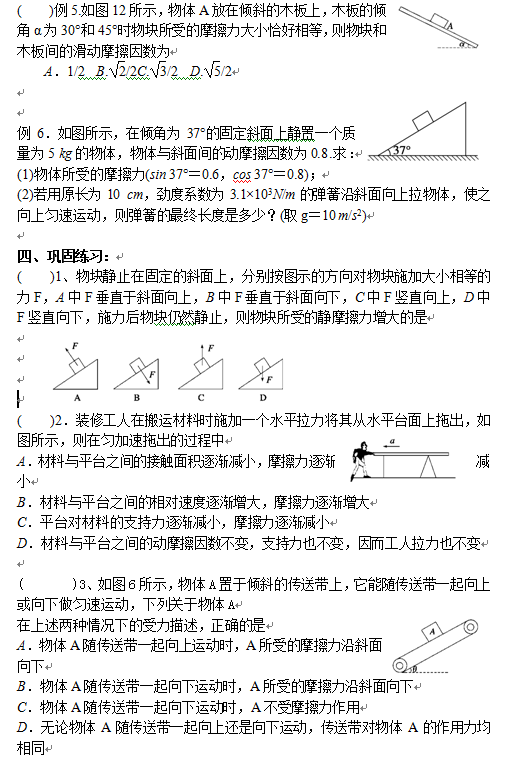高中物理试讲教案模板(合集八篇日子(8):如何提高工作效率的方法?)(3)
Chapter 2 Constant current mainly uses physical laws such as Ohm's law to analyze and discuss physical quantities such as current, voltage, and electromotive force around series and parallel circuits. Many concepts and laws in this chapter are established on the basis of electrostatic field knowledge and are closely related to the previous chapter. Current and electromotive force are important knowledge in this chapter, which runs through all chapters of electricity.
Chapter 3 Magnetic Fields Both the magnetic field and the electric field are the core content of electromagnetics. The magnetic field can be taught by analogy. The content of the textbooks in this chapter, especially the quantitative description of the properties of the magnetic field, is the basis for future learning of electromagnetics. Magnetic induction intensity, magnetic induction line and magnetic flux, ampere
Force and Lorentz force are the core content of this chapter. They are widely used in industrial and agricultural production and high-tech development.
2、High School Physics Elective 3-5:
Chapter 16 The Law of Conservation of Momentum. This law is one of the basic conservation laws in nature, and it is the knowledge necessary for the study of microscopic particles. The structural design of this chapter has changed greatly compared with the past. Its core role is to reflect the spirit of inquiry in learning and emphasize the idea of "conserved quantity" in physics.

Chapter 17 Wave-particle duality. This chapter demonstrates the wave-particle duality of human understanding of microscopic particles based on the historical context of the scientific exhibition. The establishment of quantum theory deepens people’s understanding of the material world and understands human beings. The limitation of direct experience shows that mankind's exploration of the world is constantly deepening.
Chapter Eighteen Atomic Structure This chapter and the previous two chapters belong to the content of modern physics. Focus on the nuclear structure model of atoms and Bohr's atomic structure theory.
Chapter Nineteen The Atomic Nucleus, the main content of this chapter is two aspects of the knowledge about the nucleus, and the knowledge about the development and utilization of nuclear energy. The first seven sections of this chapter mainly introduce the contents of these two aspects, and the eighth section has a point for the conclusion of the book. The arrangement of the sections is basically arranged by the process of human exploration of the inner mystery of the nucleus.
三、teaching goals of this semester
Physics Elective 3-1:
The focus of this semester's teaching is to complete the teaching content of elective 3-1 on the requirements of the college entrance examination; complete the teaching content of the senior three physics elective 3-5 according to the requirements of the curriculum standards and the requirements of the college entrance examination, and enable students to master the basics through various teaching methods Knowledge and laws of physics, and be able to solve problems
Used. The teaching of elective 3-1 is usually practiced, and the teaching is based on the requirements of the examination.
四、Measures to improve teaching quality
1、 adheres to the principle of "low starting point, taking small steps, focusing on implementation and focusing on practical results". The capacity of knowledge learned in each lesson is not large, and strives to break through each. Always listen to the class and charge, constantly absorb the strengths of the peers, and discover your own problem.
2、. In class, we must grasp the hearts of students, not only focus on the explanation of knowledge, but also focus on grasping the laws of cognition, and organize teaching in a timely manner. The best strategy is to use vivid and humorous language to arouse students' interest and let them Want to learn, willing to learn. The next best thing is to remind them in time and give them appropriate praise and criticism, so that they dare not listen or learn. The selected examples are few and precise, and they are immediately accompanied by similar exercises to strengthen and consolidate them to achieve the purpose of drawing inferences from one another.
3、Use the self-study time to answer questions and solve questions on the one hand, and on the other hand to guide students to read and return to textbooks. For some special conclusions and knowledge of thermal, optical, atomic physics, etc., a certain amount of morning reading time will be set aside for the students in the later stage. Reading books, remembering comprehension. It is recommended to prepare lessons according to the unit division of time.
4、 instruct students to use their brains scientifically, arrange their work and rest time scientifically, insist on lunch breaks, and do not blindly work hard, fight time wars. Successful people must be hard-working people, but hard-working people may not succeed.
5、 Do as many experiments as possible, let students do more experiments, stimulate students' interest, increase their perceptual knowledge and deepen understanding; strengthen
迟早要统一